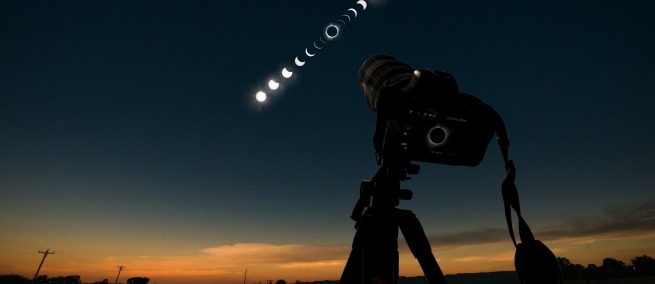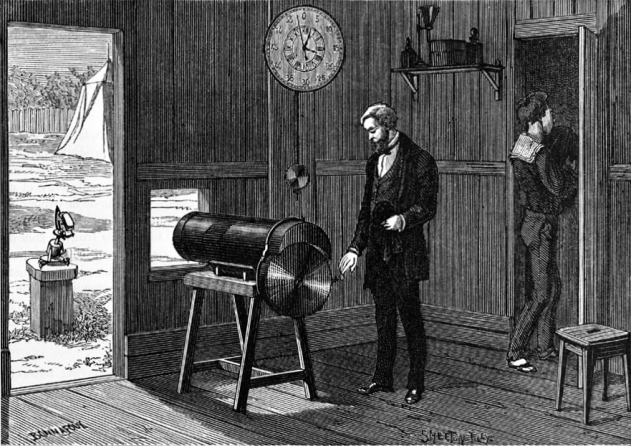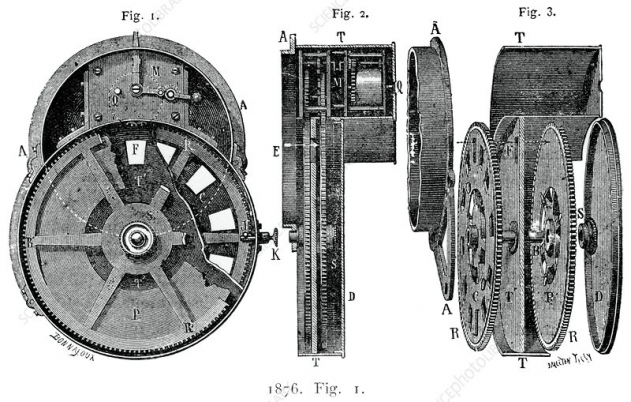
The total solar eclipse happening on April 8, 2024, is a much-anticipated phenomenon by people all over the world, especially those who are planning to be in the path of totality—13 U.S. states where the total solar eclipse will be visible, including in parts of New York. But, for those who will not have a chance to bear witness to the eclipse, it will be captured with the aid of a 34-meter NASA Goldstone Apple Valley Radio Telescope, and the footage will be broadcast by The National Aeronautics and Space Administration (NASA) on channels like NASA TV and streamed online. This won’t be the first time an astronomical event will be documented using technologically advanced cameras and distributed with the help of television and social media, but the intertwined histories of astronomy and cinematography go even further back to the 19th century—they were in fact born from the same invention.
Pierre Janssen (February 22, 1824 – December 23, 1907) was a French scientist, inventor, architecture professor, and astronomer. His observations of the solar eclipse of August 18, 1868, in Guntur, India led to a series of discoveries. First, he noticed bright lines in the spectrum of the chromosphere, a star's outer atmosphere, showing that the chromosphere is gaseous. Janssen utilized a spectroscope, an instrument used to determine the chemical makeup of a visible source of light which later resulted in the discovery of the element helium. Second, during the eclipse, he suddenly realized that the use of the narrow slit of the spectroscope to observe the chromosphere would enable astronomers to study solar prominences—large, bright features extending outward from the Sun’s surface. With this new tool, astronomers could study these features at times other than during an eclipse, something not previously known. These discoveries aided his invention of the "Revolver photographique" also known as "The Janssen slide."

The Janssen slide in operation (engraving published in La nature, 1875).
The Janssen slide enabled a user to capture the world in motion: it was the instrument that originated chronophotography, a branch of photography based on capturing movement from a sequence of images. The Janssen slide was built by Antoine Redier and his son, and functioned by taking a series of images at short, regular and adjustable intervals of time. The revolver used two discs and a light-sensitive plate. It adapted the daguerreotype process, which was used in photography to achieve highly detailed images. The first disk with twelve holes would take a full turn every 18 seconds, so that each time a shutter window passed in front of the second disk with just one hole, the sensitive plate would be revealed beneath, capturing an image on the corresponding part of its surface.

Detailed view of the Janssen slide, Bulletin de la Société française de photographie, Volume 22.
The Janssen slide played a key role in one of the biggest 19th century scientific challenges: determining the distance between the Earth and the Sun, or a so-called astronomical unit. The only way to count an astronomical unit was to observe and document the astronomical phenomenon of the transit of Venus. In 1874, the passage of Venus over the face of the sun became the first moving image.
Janssen was able to show the world the importance of photography to astronomy. The technology he helped to pioneer is the origin of that which makes it possible to document and watch the upcoming total solar eclipse.
♦